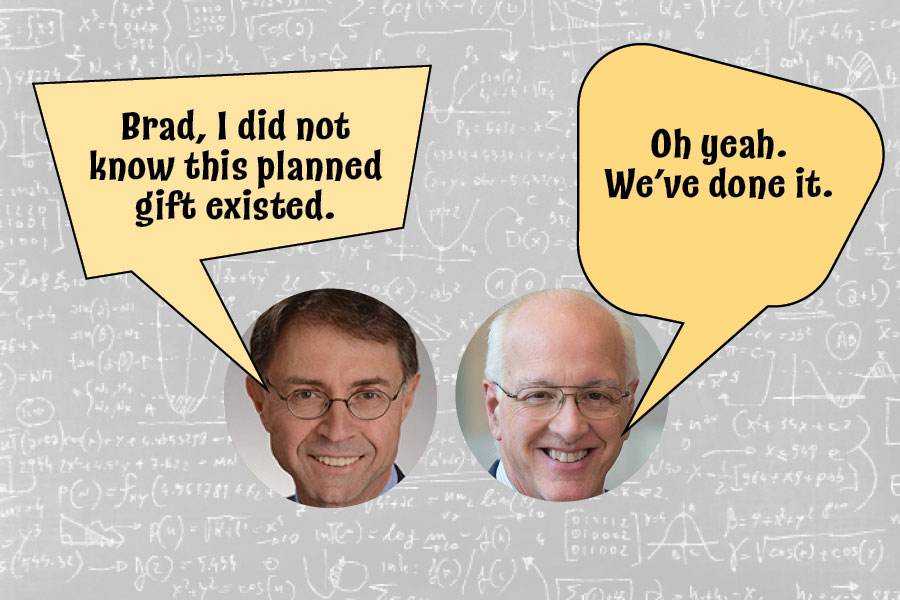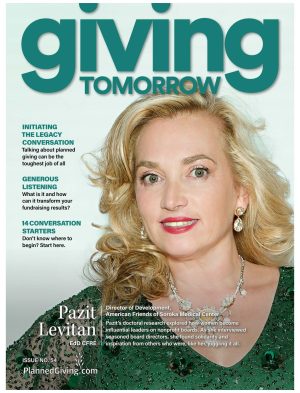Viken: Brad, good seeing you again. Sorry I had to rush off last week. Can you explain to me again how that unusual Retained Life Estate works where you pay the donor while they’re still living there?
Brad: Yep. A donor can donate a house, get a deduction, live there for life, and receive an annuity from the donation for life.
Viken: No, that last part can’t be true. That’s like having your cake and eating it, too.
Brad: It’s true, and we’ve done it a few times this year already.
Viken: Okay, but you must be taking some sort of a risk here. Lay it on the table.
Brad: Without getting too technical, it’s a combination of two pretty common planned gifts – a retained life estate and a charitable annuity. It starts with the RLE – the donation of a primary residence to a charity while the donor is still alive. The terms of an RLE allow the donor to remain in the house while remaining responsible for the upkeep of the property, tax payments, utilities etc.
What’s unique about this variation is that we’ve recognized that in many of these situations, the property will hold its value and will have a future resale value high enough to cover the costs of paying the donor an annuity for the rest of their life. The nuance of this arrangement that makes it unaffordable or unattractive to most charities is the cash flow issue to fund the annual annuity and administrative expenses until the sale of the property at the donor’s passing. That could be 10 years of negative cash flow until the charity can recoup their outflows.
Viken: Wow, that’s a whole field of weeds. But I don’t see where the charity generates any money in this to pay the annuity to the donor. They’ll go broke — how does the charity pay for this?
Brad: You nailed the major challenge in making this work: there is no new cash flow to pay the annuity and the fees to administer the annuity. The funds have to be fronted by the charity for a number of years and when the donor passes, they’ll collect their accrued fees and cash advances from the proceeds of the sale of the property. As I said, not every charity will be able to offer this themselves.
Viken: Is there a risk-free way of doing this?
Brad: Yes. If Charitable Solutions /NGAF handles the gift, there is ZERO risk to the charity. This is the process::
- Charity x learns of an opportunity through donor conversations
- Charity x introduces CS/NGAF into the conversation
- CS/NGAF and the donor mutually agree to the arrangement and terms
- Donor gifts the real estate to NGAF
- NGAF establishes an annuity contract with donor
- Donor lives in house (owned by NGAF)
- Donor gets yearly payments (from NGAF)
- Donor dies, and NGAF sells the house
- NGAF reimburses itself for fees and payments previously issued
- Charity x gets a check from NGAF for the net proceeds of the sale after costs
Viken: That sounds complicated. How about if the fundraiser doesn’t ‘get’ it?
Brad: The fundraiser should not feel they have to get it. They are under pressure to get donations on the books and this is a pretty nuanced gift that takes time to develop. So, they should only court the donor, and if they feel on the surface this might be worth exploring further with a donor, leave us to handle the details. If a gift of real estate comes up in a conversation this might be an arrangement that fits their situation better than just an RLE or gift annuity alone.
Viken: Well, you know that most people are very controlling and will think they should be involved in the process.”
Brad: I know. It’s okay to be “involved” to the extent that they want to stay close to a good, loyal donor – and that’s what they should do. But the risk and details need to be managed by a team of savvy and experienced asset and annuity managers.
Viken: This means they will likely not even get off their butts to make this happen.
Brad: Maybe. But the ones who take the initiative on gifts that appropriately align the needs and desires of their donors and do make it happen will raise more money, get raises themselves, and keep their boards happy, too. The top fundraisers are the people who clear their desks and and know when to trust professionals to handle the gift details. They know they need to lean on others to help get the job done. Hey, everyone in any business needs a good rolodex of experts and advisors. (Sorry, I guess just dated myself with that rolodex reference.)
Viken: Who is your partner again?
Brad: Bryan Clontz and his team at the National Gift Annuity Foundation.
Viken: Yes, I know him. I thought he only did CGAs. Clever guy. Burger?
Brad: You treating?
Viken: No. It’s your turn.
Categories: Gifts of Real Estate, Planned Giving Marketing, Marketing Planned Giving






